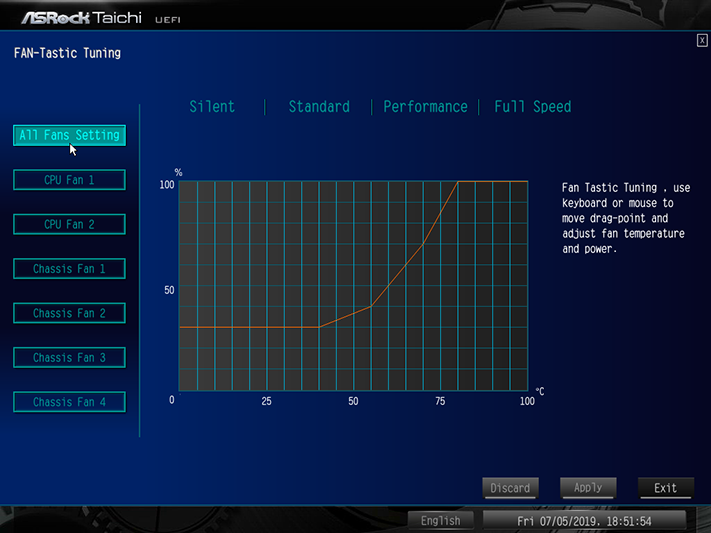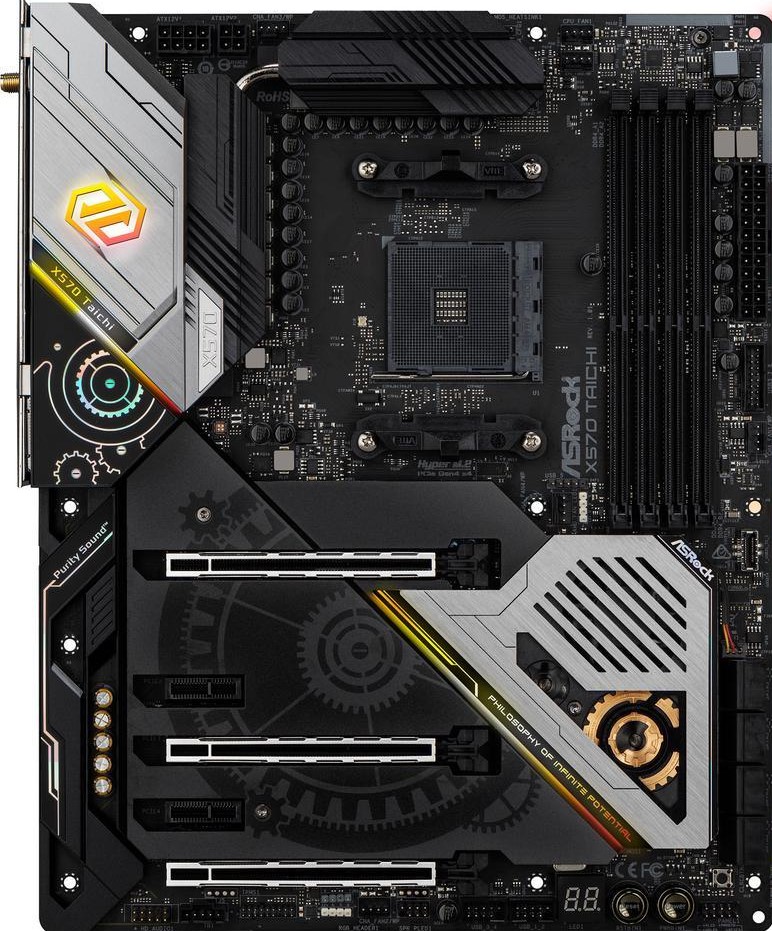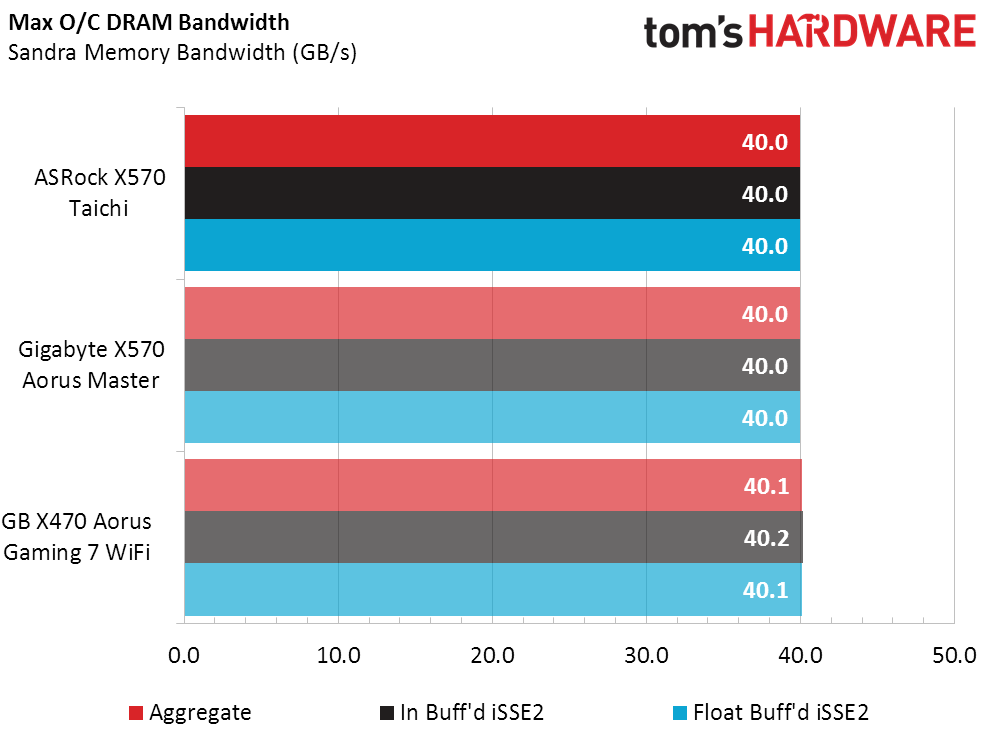ASRock X570 Taichi Review: Jumping Into PCIe 4.0 With Ryzen 3000
Why you can trust Tom's Hardware
Firmware and Overclocking
Firmware
The X570 Taichi’s OC Tweaker menu provides the overclocking controls we needed to reach 4175 MHz at 1.375V. More voltage would allow it to run temporarily at 4.20 GHz, but that’s hardly worth fighting for at the cost of CPU longevity. The board’s default “Level 3” Load-Line calibration even did an adequate job of stabilizing core voltage under shifting loads, though higher levels might be appropriate to maintain competition-level voltage settings.
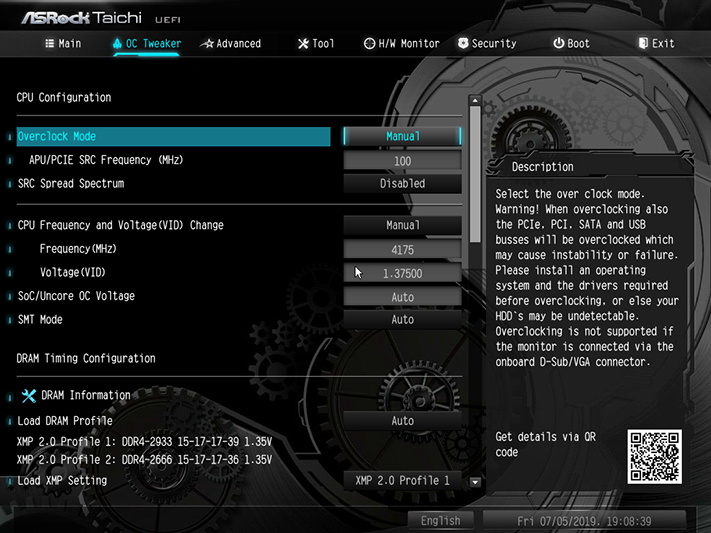


Memory voltage was far less accurate, with the board’s 1.338V setting producing a measured 1.351V at the slots. We keep that under 1.355V for all boards to make sure nobody gets a leg up in overclocking by understating voltage, yet the X570 Taichi still pushed our DDR4-2933 to a stable DDR4-3733 with four DIMMs installed, and DDR4-4000 with only two DIMMs.
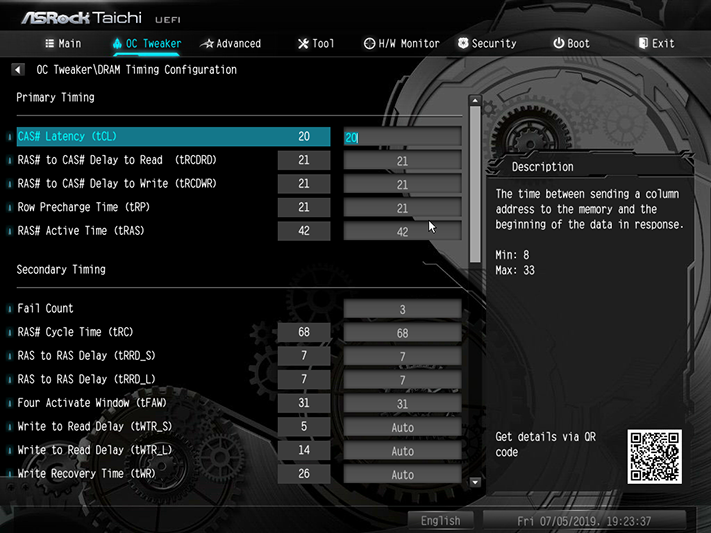
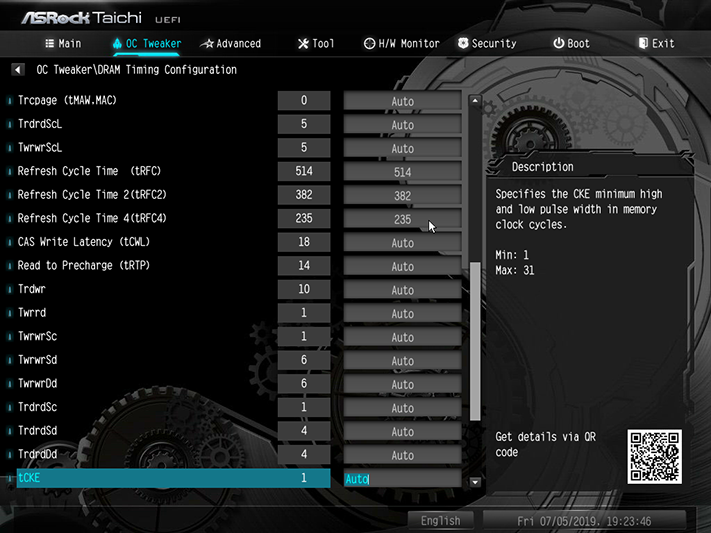
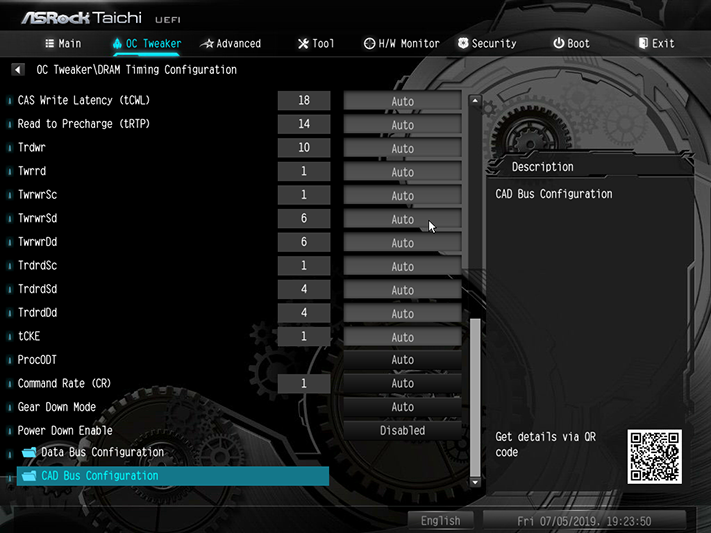
We base our memory overclock on CAS 21 straight timings (21-21-21-42) to give our modules a little breathing room, yet the first setting (CAS) showed 21 cycles when we set 20. Because our memory reaches the same overclock at either 20-21-21-42 or 19-21-21-42 (depending on the CPU), trimming one cycle off the front end of our limit doesn’t reduce its clock ceiling.
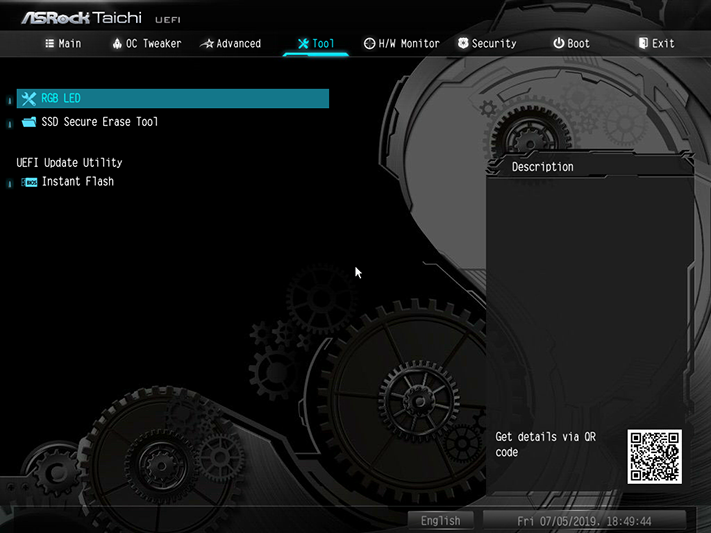
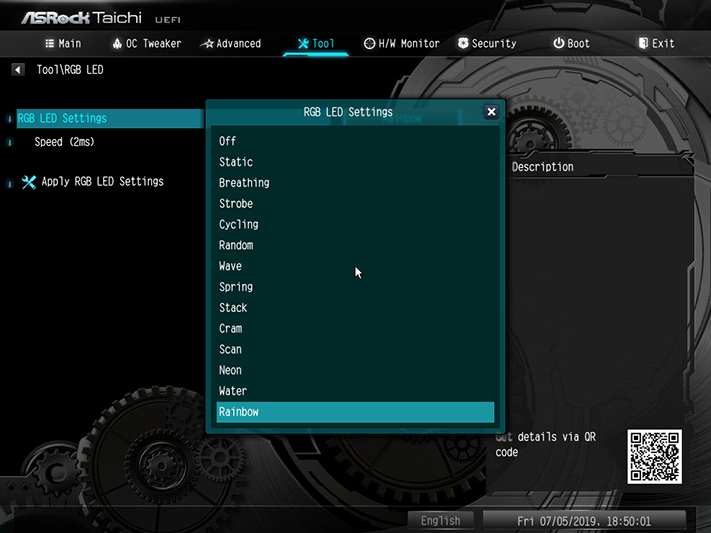
Though the board’s RGB software is more elaborate, its firmware app provides a variety of patterns for both the onboard strip (under the board’s front edge) and RGB headers.
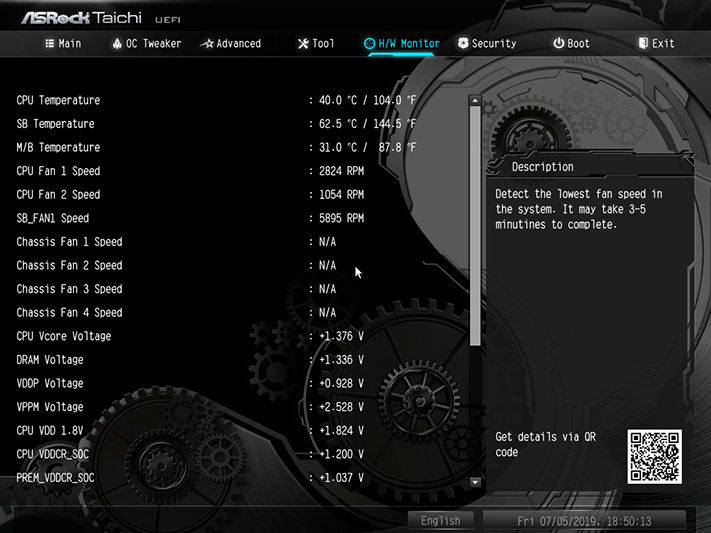
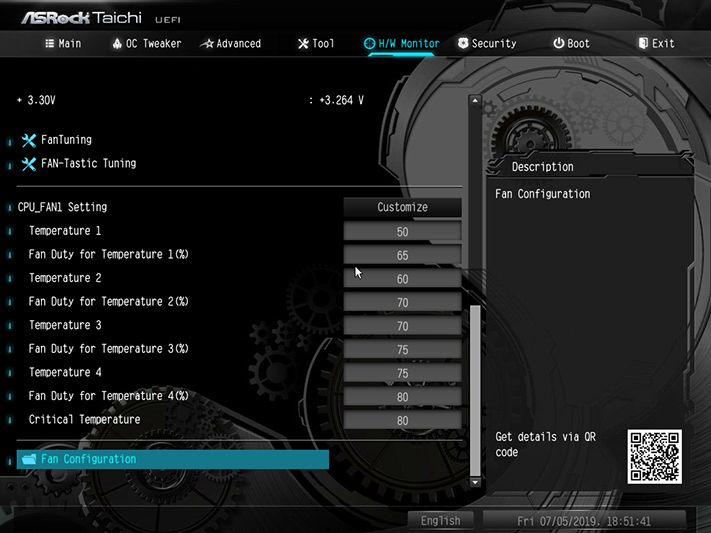
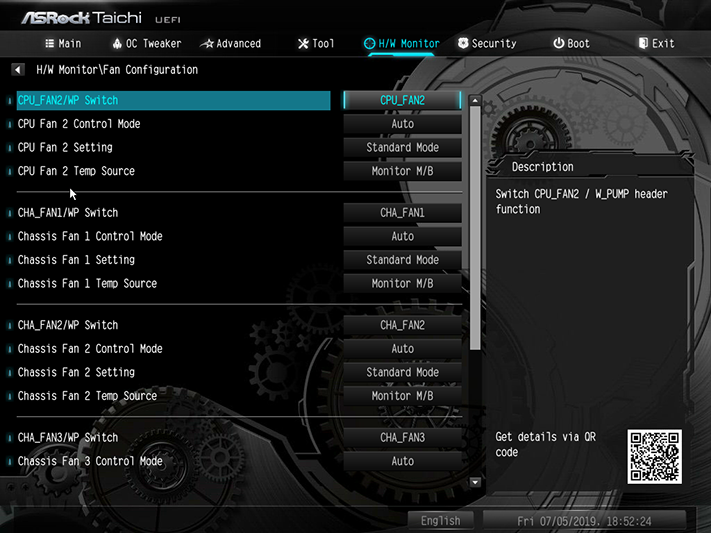
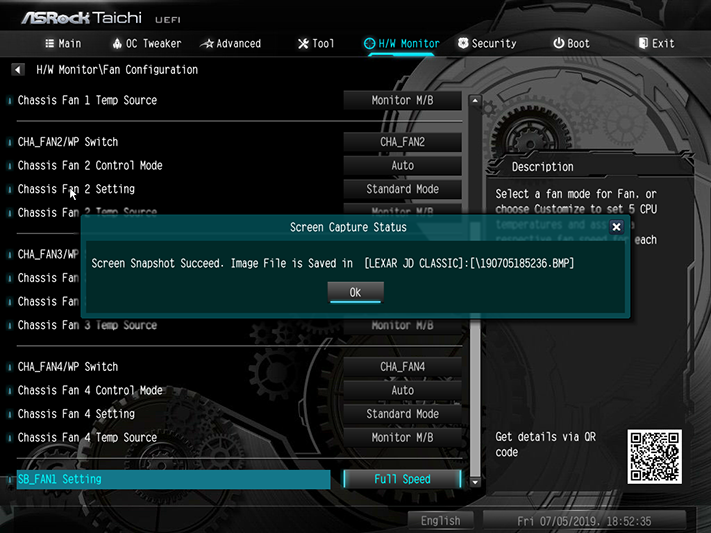
Fan speeds are adjustable using either motherboard-defined profiles or custom slopes/curves, and the board’s FanTuning algorithm adds automatic customization to modify the factory profiles to better-match individual hardware. Five of the fans can be automatically (via motherboard detection) or manually switched between voltage and PWM-based RPM control, leaving just the primary CPU fan header as PWM-only.
Users who want a to create their own fan profile without keying in percentages can use ASRocks’ Fan-Tastic Tuning menu to drag set points around on a map.
Overclocking
| Frequency and Voltage settings | ASRock X570 Taichi | Gigabyte X570 Aorus Master | Gigabyte X470 Aorus Gaming 7 WiFi |
| BIOS | P1.20 (06/20/2019) | F5e (07/04/2019) | F40 (05/16/2019) |
| Reference Clock | 100-200 MHz (1 MHz) | 100-300 MHz (10kHz) | 100-300 MHz (10kHz) |
| CPU Multiplier | 22-63x (0.25x) | 8.00-63.75x (0.25x) | 8.00-63.75x (0.25x) |
| DRAM Data Rates | 1866-2400/5000/6000 (267/66/100 MHz) | 1333-2666/5000/6000 (267/66/100 MHz) | 1333-5000 (66.67 MHz) |
| CPU Voltage | 0.90-1.55V (6.25 mV) | 0.75-1.80V (6.25mV) | 1.00-1.70V (6.25mV) |
| CPU SOC | 0.90-1.60V (5 mV) | 0.75-1.80V (6.25 mV) | 0.80-1.70V (6.25mV) |
| VDDP | 0.80-1.30V (10mV) | Offset -0.2 to +0.70V (20 mV) | Offset -0.2 to +0.70V (20 mV) |
| DRAM Voltage | 1.00-1.80V (6 mV) | 1.00-2.00V (10 mV) | 1.10-2.00V (10 mV) |
| DDR VTT | Offset -600 to 600 mV (10mV) | 0.44-0.98V (5 mV) | 0.83-1.66V (8.33 mV) |
| Chipset 1.05V | 1.00-1.20V (5 mV) | 0.80-1.50V (20 mV) | 1.05-1.41V (20 mV) |
| CAS Latency | 8-33 Cycles | 8-33 Cycles | 8-33 Cycles |
| tRCDRD/RDCWR | 8-27 Cycles | 8-27 Cycles | 8-27 Cycles |
| tRP | 8-27 Cycles | 8-27 Cycles | 8-27 Cycles |
| tRAS | 21-58 Cycles | 21-58 Cycles | 21-58 Cycles |
We’re comparing the X570 Taichi to Gigabyte’s X570 Aorus Master, which we’re then comparing to that company’s previous-gen X470 Aorus Gaming 7 WiFi. All three boards provide a range of voltage levels that exceed what we’re able to use effectively on our dual-fan closed-loop cooler.
Get Tom's Hardware's best news and in-depth reviews, straight to your inbox.
Both X570 boards reached the same 4175 MHz CPU clock, but the X570 Aorus Master edged out the X570 Taichi with the highest stable data rate for our DDR4-2933. With four DIMMs installed, the X570 Taichi even fell victim to the X470 comparison board.
Performance is the point of overclocking, and the X570 Aorus Master needed that extra 133 MHz data rate (for four DIMMs) simply to produce the same performance as the X570 Taichi. Some companies use more-conservative advanced memory settings than others to gain an advantage in clock numbers, but the identical performance number puts both boards on par.
MORE: Best Motherboards
MORE: How To Choose A Motherboard
MORE: All Motherboard Content
Current page: Firmware and Overclocking
Prev Page Features and Layout Next Page Benchmark Results and Final Analysis-
hannibal Yeah. 470 boards Are definitely better bang for the buck!Reply
Is there coming bigger 570 motherboard comparison? The sound of the motherboard cooler is a big thing. What board have the quitest options and settings? -
alextheblue Reply
For the most part I agree, we definitely need more X570 comparisons. I know the BIOS is still early but man, the chipset fan should have a proper ramp. That's a basic feature these days - for their sake I hope that was a bug in the shipping BIOS they didn't catch. However, to my surprise there are quite a few somewhat affordable X570 boards in the $150-160 range. Based on what we were hearing pre-launch I thought that the 400 series chipsets would be handling the sub-$200 range until B550 was ready. I'd like to see more overviews/comparisons done on the entry-level X570 boards.hannibal said:Yeah. 470 boards Are definitely better bang for the buck!
Is there coming bigger 570 motherboard comparison? The sound of the botherboard cooler is a big thing. What board have the quitest options and settings? -
splave "Finally, a test that really stands out! ASRock’s X570 Taichi consumed far more power at full load, and a quick search for the cause revealed that this board, and only this board, was running the 3700X at 1.31V and 4.1GHz under Prime95 small-FFTs. The other boards were running less than 1.2V, at 3.9 to 4.0 GHz in this test"Reply
So the asrock is running 200mhz more by default? Why do you consider this a bad thing. 😀😀 -
Crashman Reply
Because the peak power difference appears to have a negligible impact on real-world performance.splave said:"Finally, a test that really stands out! ASRock’s X570 Taichi consumed far more power at full load, and a quick search for the cause revealed that this board, and only this board, was running the 3700X at 1.31V and 4.1GHz under Prime95 small-FFTs. The other boards were running less than 1.2V, at 3.9 to 4.0 GHz in this test"
So the asrock is running 200mhz more by default? Why do you consider this a bad thing. 😀😀 -
ocer9999 I would say most users would be happier with higher clocks speeds than lower.Reply
You could always have spined like "The motherboard is the fastest of all the motherboards we have tested, but at energy efficency loss".
I'm pretty sure I want the fastest one :) -
tyr_antilles Reply
Because this causes the board to run hotter, consumes sensibly more power and at the end performance difference is not worth it. I always prefer a honest board that runs at default values and if I want more performance I will overclock it myself. I have 35 C temperature on my room and I do not want a hot board.splave said:So the asrock is running 200mhz more by default? Why do you consider this a bad thing. 😀😀
Other thing that concerns me is the small chipset fan on x570 boards. I remember older boards with these kind of high rotation fans and their longevity is very bad. After some time, dust get on the fan and it will stop functioning. Being custom made they are very hard to be replaced. I will buy a motherboard with passive cooling. -
Crashman Reply
Good luck: The old chipset heatpipe solution often didn't work right when the board was inverted, so none of the boards I've seen are using it.tyr_antilles said:Because this causes the board to run hotter, consumes sensibly more power and at the end performance difference is not worth it. I always prefer a honest board that runs at default values and if I want more performance I will overclock it myself. I have 35 C temperature on my room and I do not want a hot board.
Other thing that concerns me is the small chipset fan on x570 boards. I remember older boards with these kind of high rotation fans and their longevity is very bad. After some time, dust get on the fan and it will stop functioning. Being custom made they are very hard to be replaced. I will buy a motherboard with passive cooling. -
splave So I have spoken to an asrock contact. Companies are taking different positions. Some are undervolting vid at the risk of losing mhz with the benefit of lower power consumption and temps. In this case the gigabyte. Asrock and Asus both are pushing more voltage for more clocks at the cost of more power consumption and heat. With frequency being so low on these cpus I for one would take the extra 200mhz and the expense of 5 dollars more a week on my power bill. I wouldn't call it dishonesty just different thinking by each manufacturer. I wouldn't buy an expensive overclocking motherboard to undervolt it.Reply
